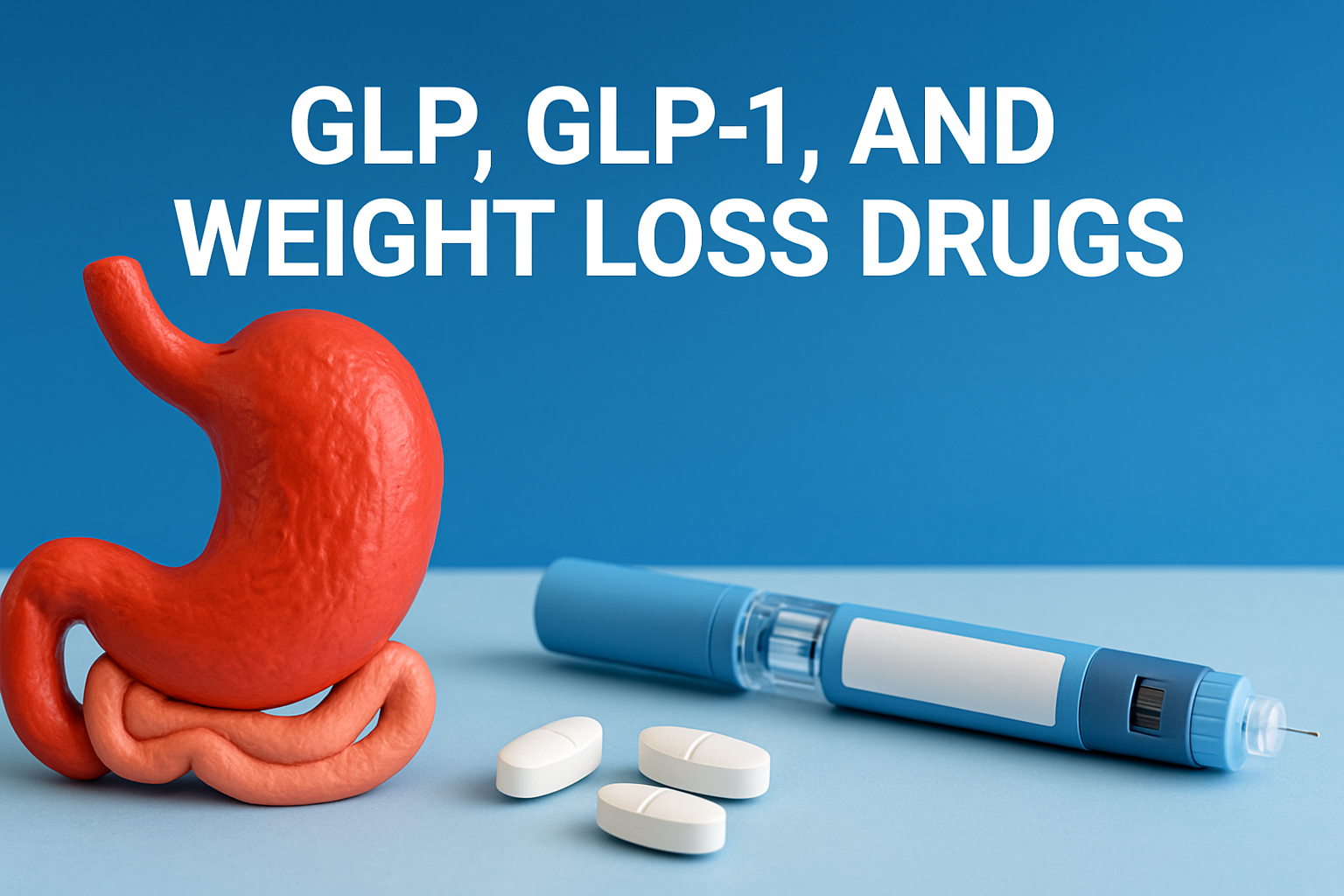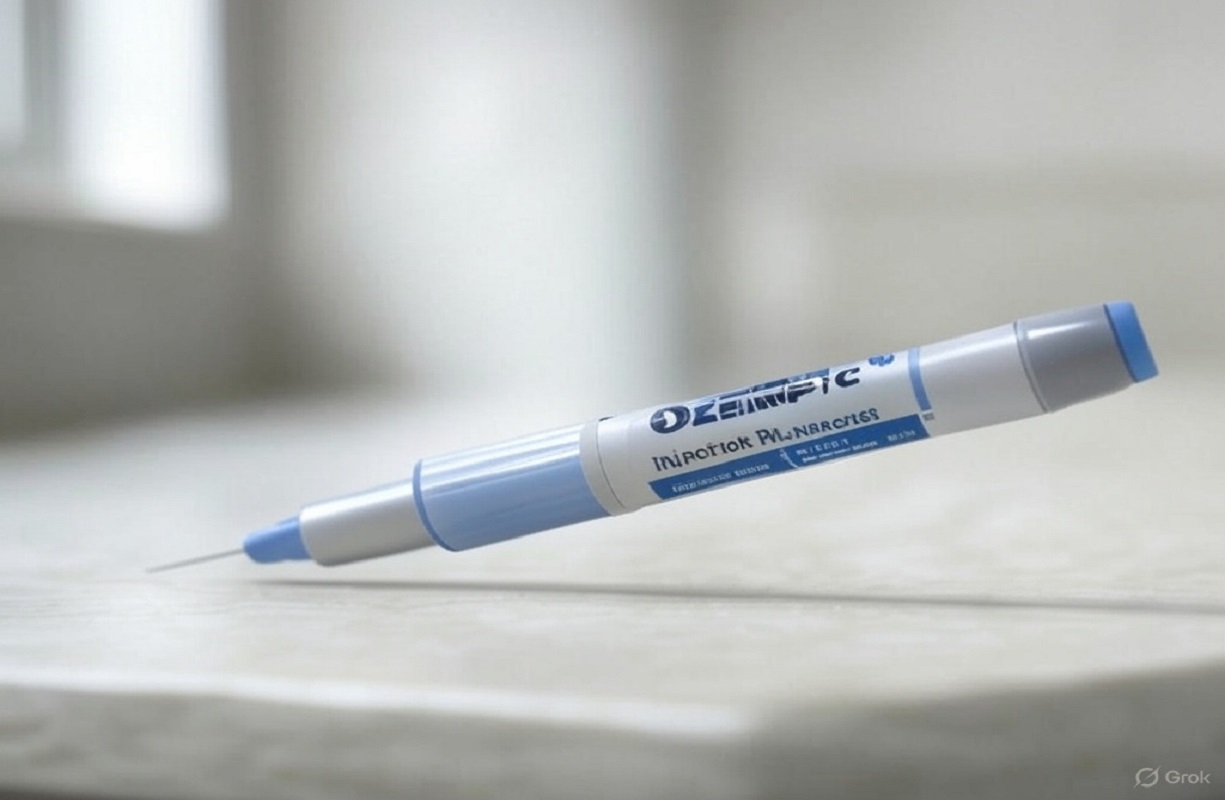Key Takeaways:
✔ GLP-1 is a natural gut hormone that regulates blood sugar, appetite, and digestion.
✔ GLP-1 receptor agonists (GLP-1 RAs) like Ozempic and Wegovy mimic this hormone, helping with weight loss and diabetes control.
✔ These drugs slow stomach emptying, reduce hunger, and improve insulin sensitivity—making them powerful tools for metabolic health.
✔ Originally developed for diabetes, GLP-1 RAs are now revolutionizing obesity treatment.
In the world of modern weight loss and diabetes care, few words are as important — or as often misunderstood — as GLP and GLP-1. With blockbuster medications like Ozempic, Wegovy, and upcoming pills like Orforglipron making headlines, it’s time to truly understand what these terms mean — and why they matter for your health journey.
Let’s dive into it in simple words.
What is GLP?
GLP stands for Glucagon-Like Peptide, a group of hormones that naturally occur in your body. These hormones play a crucial role in how your body digests food and manages energy.
Out of all the GLPs, one stands out: GLP-1.
What is GLP-1?
GLP-1 (Glucagon-Like Peptide-1) is a powerful hormone released by your gut when you eat food — especially meals rich in fats and carbohydrates.
In simple terms, GLP-1 acts like your body’s “food manager.” It:
- Boosts insulin production: Helps lower blood sugar levels after eating.
- Slows stomach emptying: Makes you feel full for longer.
- Reduces appetite: Sends signals to your brain that you’ve had enough to eat.
- Controls glucagon: Stops your liver from releasing too much sugar into your blood.
By handling these important jobs, GLP-1 keeps your blood sugar stable and your hunger in check.
What Are GLP-1 Receptor Agonists (GLP-1 RAs)?
GLP-1 RAs are a class of medications designed to mimic glucagon-like peptide-1 (GLP-1), a hormone naturally produced in the gut after eating. These drugs were first developed to treat type 2 diabetes but are now widely used for weight management due to their powerful effects on appetite and metabolism.
How Do They Work?
GLP-1 RAs activate the same receptors as natural GLP-1, leading to:
✅ Increased insulin release (lowers blood sugar)
✅ Reduced glucagon secretion (prevents blood sugar spikes)
✅ Slowed stomach emptying (makes you feel full longer)
✅ Appetite suppression (signals the brain to reduce hunger)
This combination helps with blood sugar control in diabetes and sustained weight loss in obesity.
How Do GLP-1 Drugs Work?
Scientists realized that mimicking GLP-1 could help people struggling with obesity and type 2 diabetes.
Thus, they created GLP-1 receptor agonists — medicines that act like GLP-1 but are longer-lasting and more powerful.
Here’s how these drugs work inside your body:
- They act like GLP-1, boosting your natural insulin and controlling your blood sugar after meals.
- They slow down digestion, keeping food in your stomach longer so you feel full and satisfied.
- They reduce cravings, helping you eat less naturally — without extreme dieting.
Examples of GLP-1 drugs:
- Ozempic (for diabetes, often used off-label for weight loss)
- Wegovy (specifically approved for weight loss)
- Mounjaro (tirzepatide, a dual-action drug working on GLP-1 and GIP)
- Upcoming: Orforglipron — a daily pill instead of injections!
Are There Risks or Side Effects?
While GLP-1 RAs are generally safe, some users experience:
- Nausea, vomiting, or diarrhea (usually temporary)
- Gallbladder issues (rare but possible)
- Pancreatitis risk (very rare)
Controversies:
- Thyroid cancer concerns (seen in rodents, but human studies show no clear link)
- Muscle loss (some users lose lean mass along with fat)
Important: These drugs are not for everyone—people with a history of medullary thyroid cancer or pancreatitis should avoid them.
Why GLP-1 Drugs Are Changing Obesity Treatment
Obesity is not just about willpower — it’s a complex disease involving hormones, metabolism, brain chemistry, and environment.
GLP-1 drugs tackle the biological root causes:
- They fix hunger and fullness signals that often malfunction in obesity.
- They help the body regulate food intake naturally.
- They support healthy blood sugar control, reducing the risk of diabetes and heart disease.
Clinical trials have shown patients losing 15-20% of their body weight with these treatments — results previously only possible with bariatric surgery!
Beyond GLP-1: What’s Next?
While GLP-1 drugs are revolutionary, the future looks even brighter:
- Triple agonists like Retatrutide are coming, targeting GLP-1, GIP, and glucagon pathways for even greater weight loss.
- Amgen’s MariTide explores blocking certain pathways to achieve weight loss differently.
- Oral options like Orforglipron aim to make treatment more convenient and accessible for millions.
Researchers are even investigating GLP-1 combinations with drugs that preserve muscle mass (like Bimagrumab) — offering a new era of healthy, sustainable weight management.
Final Thoughts
GLP-1 is your body’s natural “fullness” and “sugar control” hormone.
GLP-1 drugs are simply powerful allies that boost what your body is designed to do — but in a smarter, longer-lasting way.
Thanks to these innovations, obesity treatment is moving beyond blame and willpower, into the world of real biological solutions — giving millions new hope for a healthier future.
However, they’re not magic bullets—healthy eating and exercise remain key. If you’re considering GLP-1 therapy, consult a doctor to see if it’s right for you.
As new therapies emerge, we may soon have even safer, more effective tools to treat obesity and diabetes — and live better, longer lives.
Quick Summary: GLP, GLP-1, and Weight Loss Drugs

FAQ: GLP-1 and Weight Loss Medicines
Q1. What’s the difference between GLP-1 and GIP?
A: GLP-1 reduces appetite and boosts insulin. GIP (Glucose-Dependent Insulinotropic Polypeptide) also helps insulin release but may encourage fat storage. Some new drugs, like tirzepatide, target both for better results.
Q2. Are GLP-1 drugs safe long-term?
A: So far, studies show they are generally safe if prescribed and monitored by a doctor. Common side effects include nausea, but serious risks are rare. Long-term cardiovascular benefits are being actively researched.
Q3. Why are new drugs combining multiple hormone targets?
A: Combining GLP-1, GIP, and glucagon aims to attack obesity from multiple biological angles — improving metabolism, reducing appetite, and enhancing fat burning — leading to better weight loss outcomes.
Q4. Are oral GLP-1 drugs as effective as injections?
A: Early data for drugs like Orforglipron (oral GLP-1) looks promising. They may offer similar weight loss with the added convenience of a daily pill.
Follow this space for updates on next-generation obesity drugs, the science behind them, and how they could transform healthcare in the coming years! 🌟




One thought on “Understanding GLP and GLP-1: The Secret Behind Today’s Breakthrough Weight Loss Drugs”
Comments are closed.